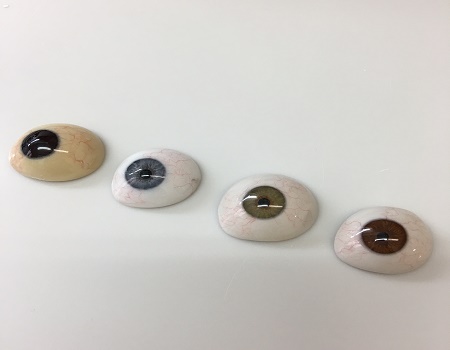Lexicon Ocular prosthesis

Lexicon Ocular prosthesis
Amblyopia : Decreased visual acuity in the eye.
Anophthalmos : Absence of the eyeball.
Blepharitis : Inflammation of the eyelids.
Orbital cavity : Cavity of the face within which the eyeball (eye) is housed.
Adaptation center : Place bringing together ocularists who practice personalized adaptation of custom-made ocular prostheses.
Cornea : Transparent anterior membrane of the eyeball.
Lens : Lenticular body placed behind the Iris which focuses light rays on the retina.
Conjunctiva : Translucent mucous membrane which covers the posterior surface of the eyelid and which folds up to cover the anterior part of the eyeball.
Conformator : Transparent and perforated shell that prepares the place for the prosthesis.
Enucleation : Remove the globe from the eye.
Evisceration : Surgical removal of the contents of the eyeball.
Eyeball : Organ of sight.
Implant : Hydroxyapatite (natural or synthetic coral) or silicone ball, used during enucleation to replace the volume of the eye and serve as a support for muscle sutures.
Iris : Colored circular membrane of the eye located between the cornea and the lens.
Leukocoria : White reflection of the pupil of the eye.
Microphthalmia : Presence of an atrophied eyeball (small globe) at birth.
Ocularist : Specialist who designs, manufactures and adapts ocular prostheses.
Pupil : Round central orifice of the iris.
Ocular prosthesis : Medical device in synthetic resin, replaces an enucleated or atropic eye, commonly called a glass eye.
Ptosis : Upper eyelid fall.
Retinoblastoma : Cancerous retinal tumor.
Sclera : White and opaque membrane, resistant, connective in nature, which forms the white of the eye.
